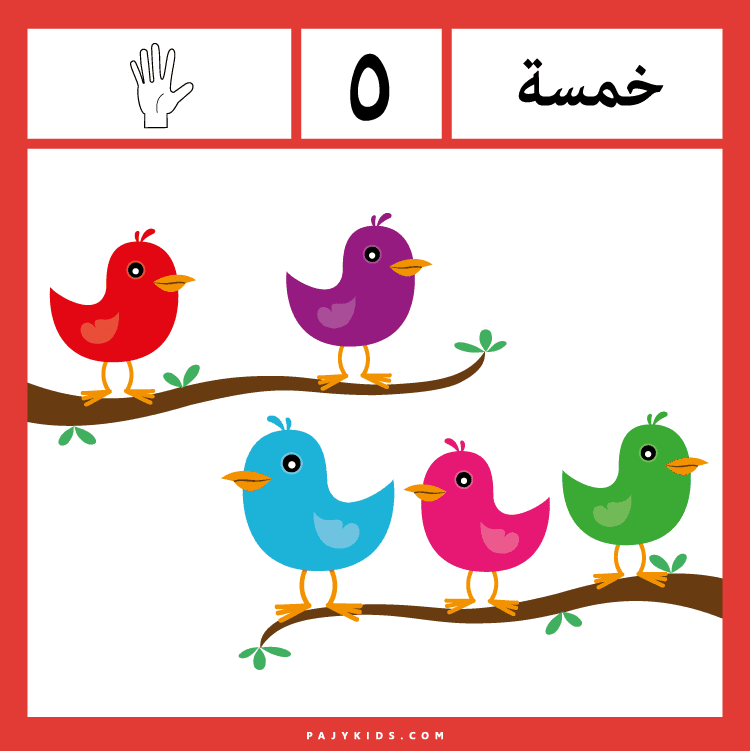Table of contents
Arabic numbers are an essential foundation for early childhood math education. Introducing these numbers through interactive flashcards helps young learners visually and physically associate numerals with quantities. These learning cards use birds and fingers to illustrate numbers 1 through 5, making counting both fun and meaningful for preschool children.
Arabic Numbers Flashcards
The first flashcard introduces the number one by displaying a single bird perched on a branch and one raised finger on a hand illustration. This simple visual makes it easy for children to understand the concept of “one” while also associating it with the Arabic numeral (١). It’s a foundational step in recognizing Arabic numbers through clear, familiar visuals.
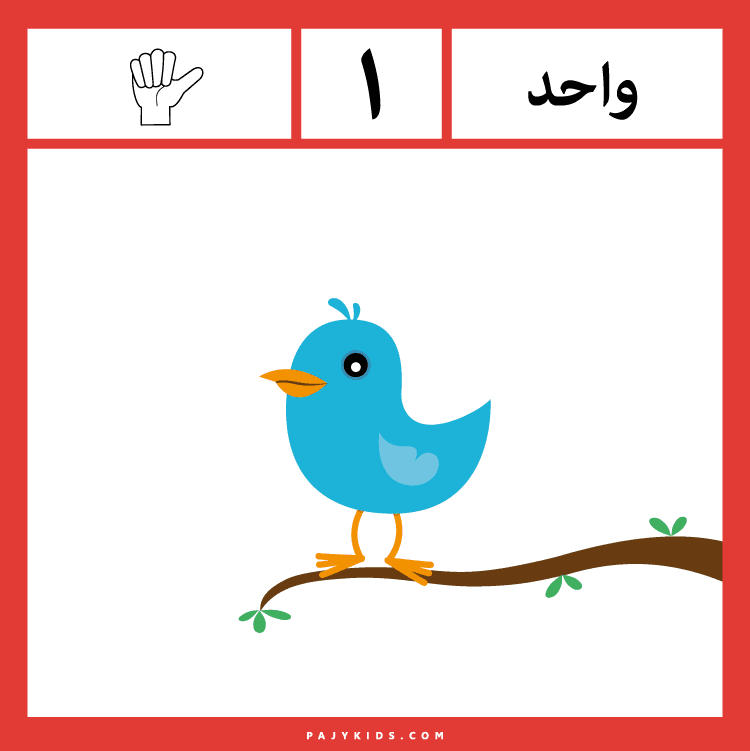
Understanding the Numbers Two and Three
The next cards continue with the numbers two and three, each using birds and fingers to demonstrate quantity. For number two, two birds are shown and two fingers are raised, followed by three birds and fingers for the number three. These visuals support cognitive development by linking numbers to concrete objects and natural finger counting.
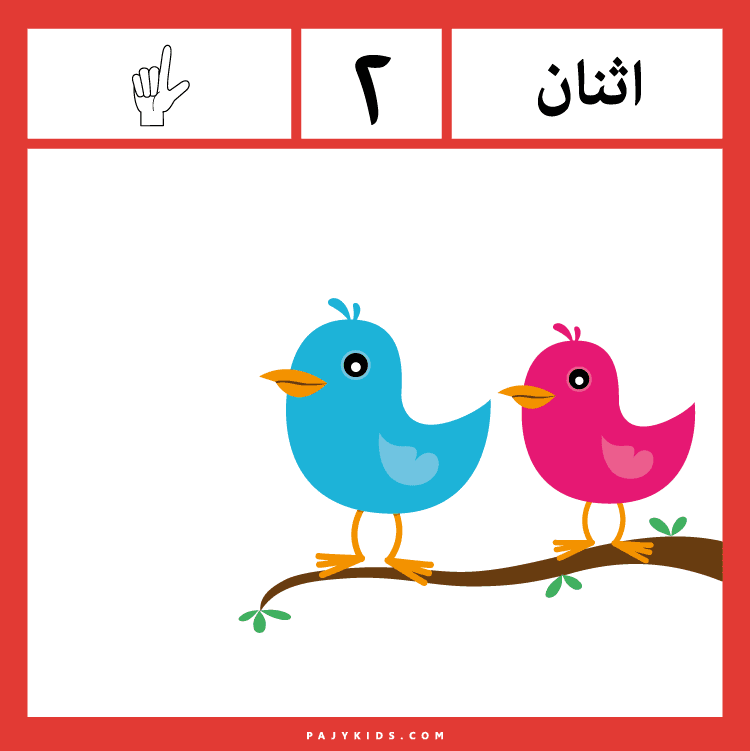
Teaching Arabic Numbers Through Birds and Hands
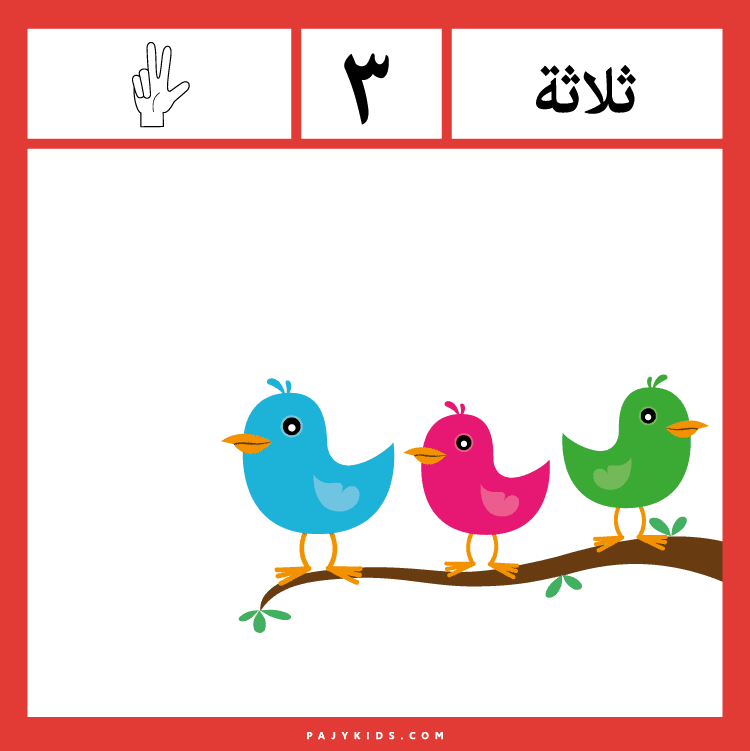
Colorful Flashcards to Introduce Arabic Numbers
As children progress, the cards for numbers four and five become more dynamic. Each one features four or five birds and matching fingers, helping kids recognize patterns, count in sequence, and improve number recall. These vibrant and child-friendly illustrations reinforce how numbers are structured and used.
See Also: Arabic Flashcards Numbers From 1 to 10
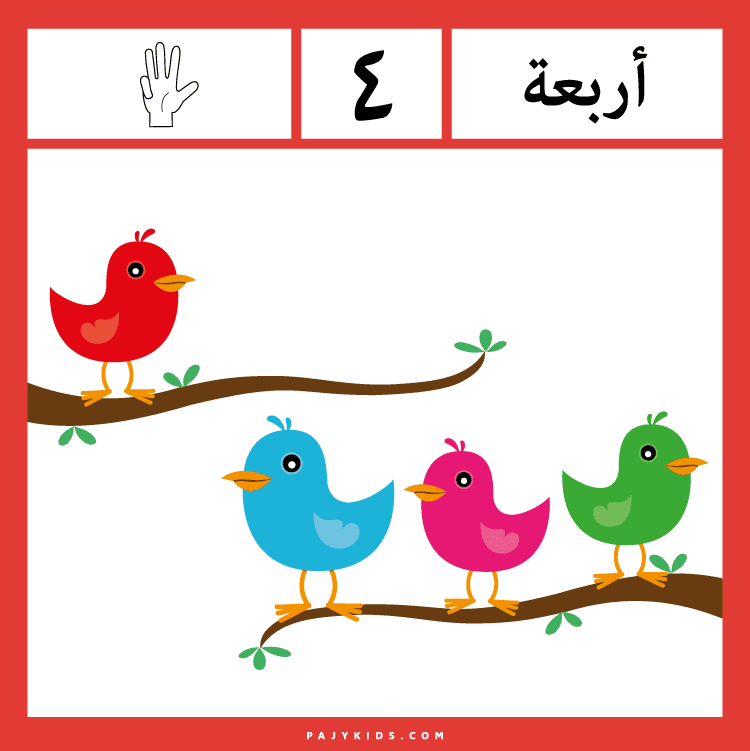
Hands-On Learning with Arabic Numbers for Kids
These Arabic numbers flashcards combine counting, visual cues, and fine motor awareness through hand and bird imagery. This multisensory learning tool enhances number recognition while strengthening early math and Arabic literacy skills. Ideal for classroom or home settings, these cards offer a playful yet effective method for teaching numbers 1–5.
